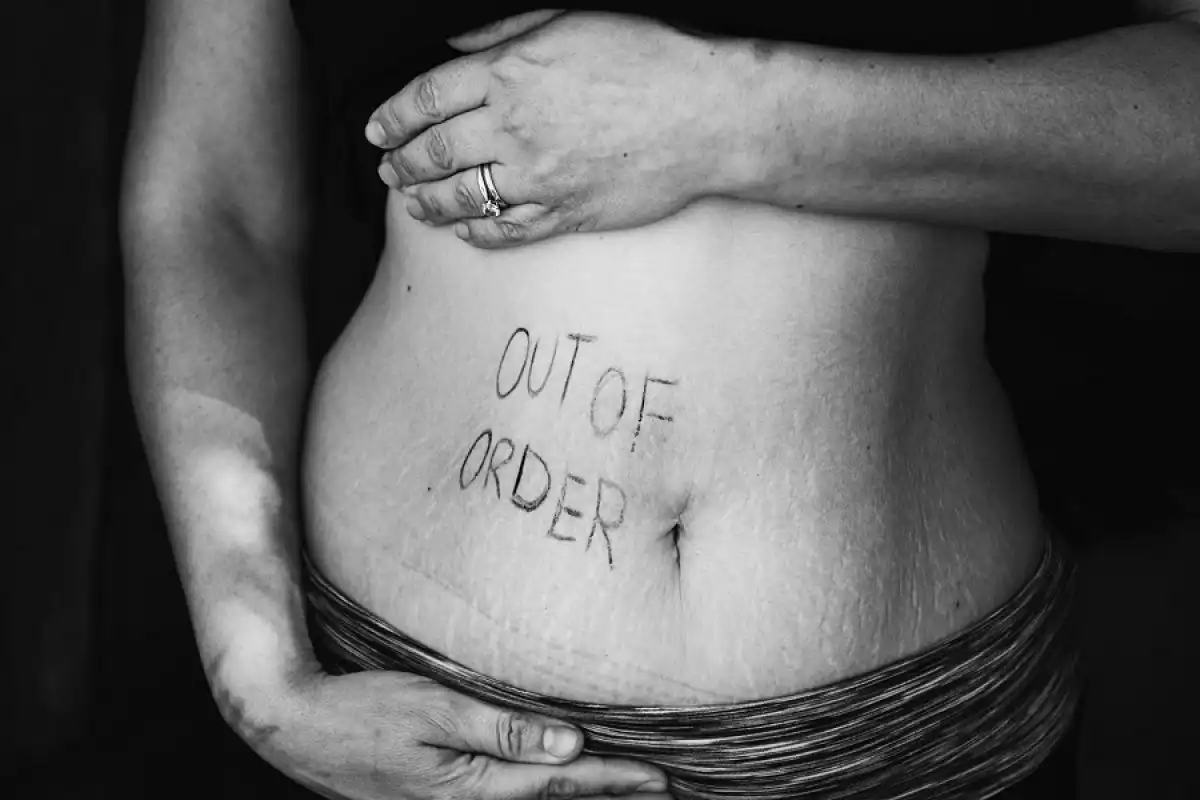
Discussing the physical and psychological changes that occur postpartum isn't the most pleasant subject, but it isn't something that should go ignored either.
The changes that women experience after giving birth or the postpartum recovery process are largely unknown in many cases. So, to shed some light on this experience, below we share 9 truths about healing after having a baby.
Postpartum recovery: 9 Brutally honest facts
Here we break down nine different situations that you are likely to run into postpartum that you probably haven't considered.
1. Recovery is not fast or easy
First, you need to know that going back to normal isn't something that happens quickly, without any setbacks. Usually, it takes between six to eight weeks for the reproductive system to recuperate after giving birth. This is approximately 40 days, which is why this phase is known as the cuarentenain some cultures. So, keep in mind that it could take a while for your body to bounce back.
2. Hormonal imbalance
Many hormonal changes occur before birth to ease the process, and in the days after, to help the new mother's body to recover. Besides, an increase in prolactin helps the breasts to begin producing milk.
These changes that take place in the body naturallycould alter your mood in a very different way from the shifts that generally happen in a regular menstrual cycle.
3. Breast pain
This point is closely linked to the prior, hormonal imbalance. The pain is related to the milk coming in which can cause inflammation, irritation, and/or a stinging sensation. This discomfort is usually mild and putting cold cloths on the breasts helps to bring some relief.
4. Lochia and cramps (afterpains)
Another brutally honest truth that people don't tend to talk about is the afterpains, a postpartum phenomenon. This occurs when the uterus contracts to heal the wound caused by placenta's detachment. This action helps the uterus to go back to its original size, and yes, this can be very painful.
Lochia, on the other hand, is related to the blood loss caused by these cramps. At first, the color is bright red, and over time it fades, and the quantity diminishes. This is similar to menstruation but with a more substantial flow and a longer duration. This bleeding continues until the uterus reaches its pre-pregnancy size (approximately).
5. Loss of bladder control
During pregnancy, the pelvic floor is under a lot of pressure, and this can lead to urinary incontinence. The problem disappears naturally over time in some cases, when the muscle tone of this area hasn't undergone to much damage. However, sometimes, intensive rehabilitation of the perianal area is necessary to get back to normal.
6. Constipation
This is another physical response that people don't like to talk about which happens during puerperium. Lazy bowel syndrome in conjunction with loss of abdominal strength is a combination of factors that could lead to constipation in the first days after giving birth. Eating a diet rich in fiber and staying hydrated is an excellent way to prevent this from happening since this will help to keep you regular.
7. Postpartum belly
Something else that no one tells you is that it isn't common to automatically have that flat belly right after giving birth like famous people you see in magazines. You'll still have a 'pregnant belly' for a few months until your abdominal muscles regain their shape. During pregnancy these muscles are stretched to allow the baby to grow.
As always: pre-pregnancy physical shape and healthy habits before and during pregnancy will have a significant impact on your ability to recuperate in this area postpartum.
8. Hemorrhoids
It's no wonder these painfully swollen veins appear after straining so much while giving birth and then experiencing constipation. Using a cold pack in this area could be very helpful as well as hemorrhoid specific ointment. However, if you are breastfeeding, remember to consult your doctor or pharmacist since there could be specific contraindications in this situation.

9. Postpartum depression (PPD)
People don't talk about the postpartum depression that women often experience after giving birth. Being a mom is an incredible challenge, and the hormonal changes that occur during and after the birthing process can lead to emotional instability.
Although this is a normal part of puerperium, if symptoms get worse (intense and long-lasting sadness etc.), then it would be a good idea to seek out a specialist's advice to help prevent a possible case of postpartum depression or the baby blues.
So, as you can see after reading this list of things that nobody tells you about life postpartum, the recovery process isn't quick or easy. All women experience some of these points, while others depend on each woman's own personal experience.
Puerperium is a phase that all women have to go through after having a child, although it can be uncomfortable. However, it's important to know how to tell the difference between normal symptoms and signs that could be a reason for concern. If you have any doubts, it would be best to consult your midwife; if she doesn't know the answer, she's sure to know someone else who will.
